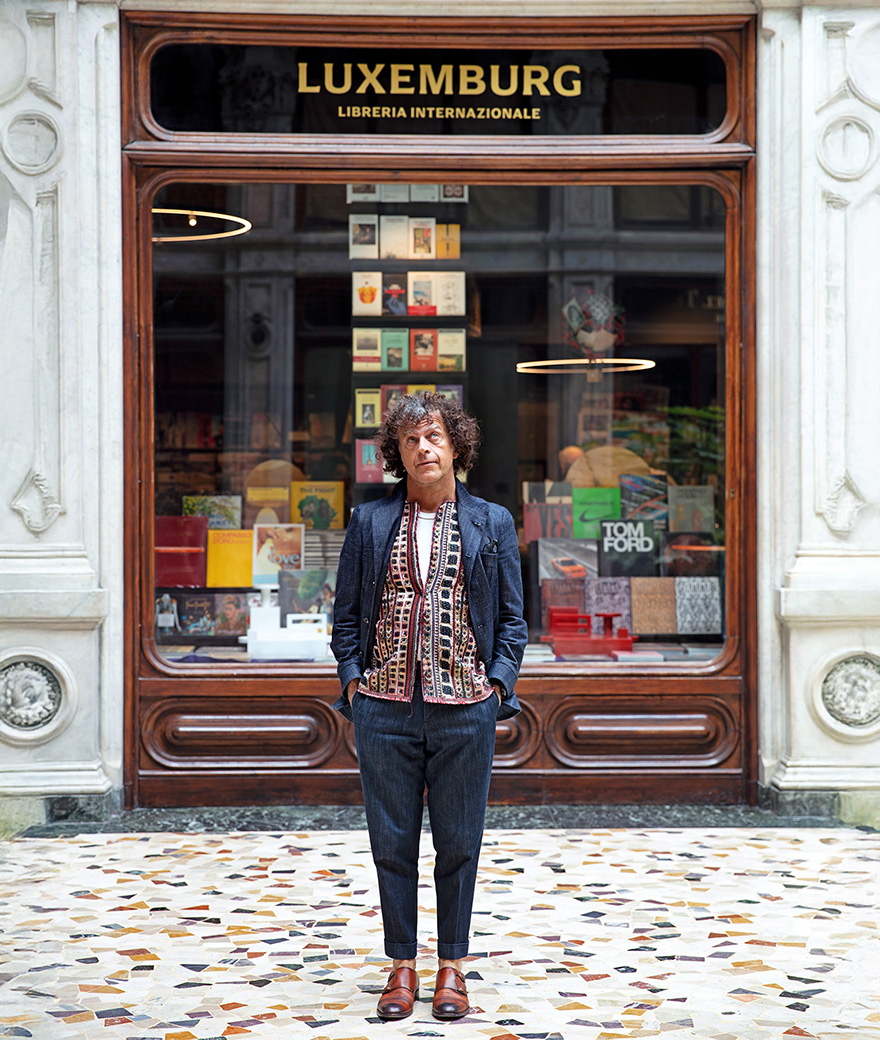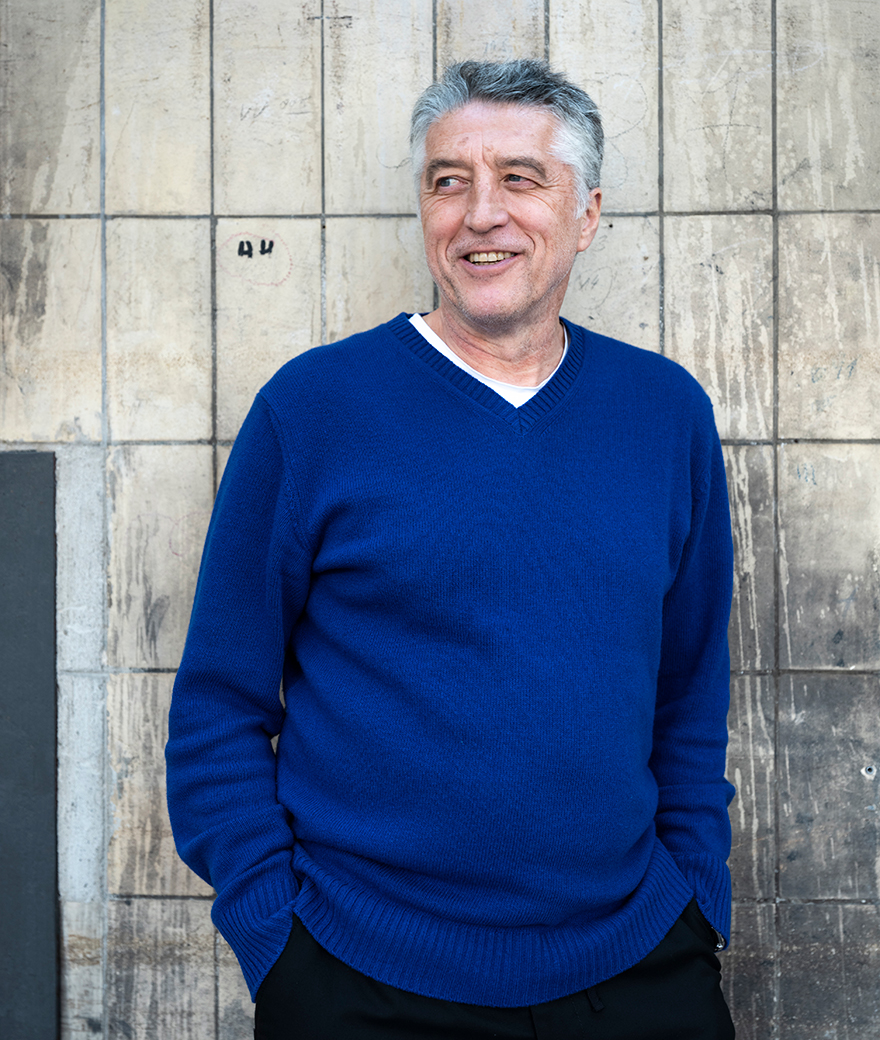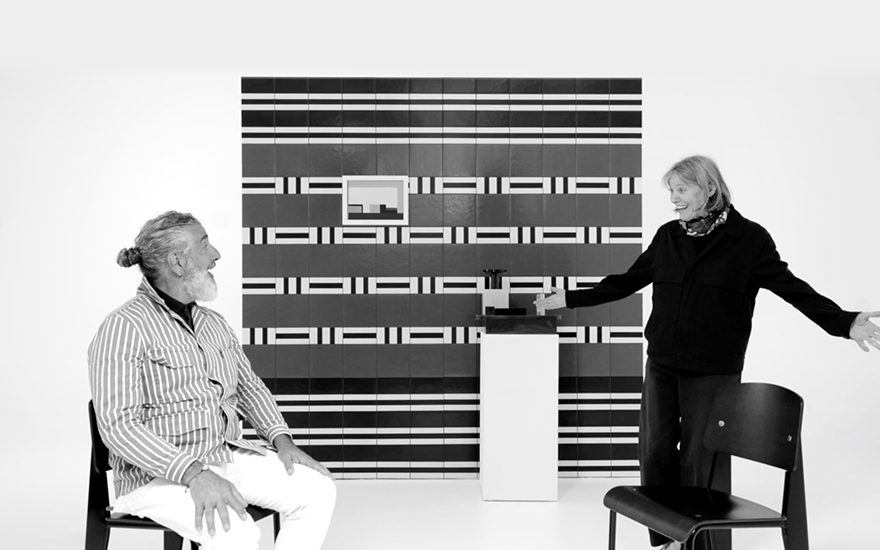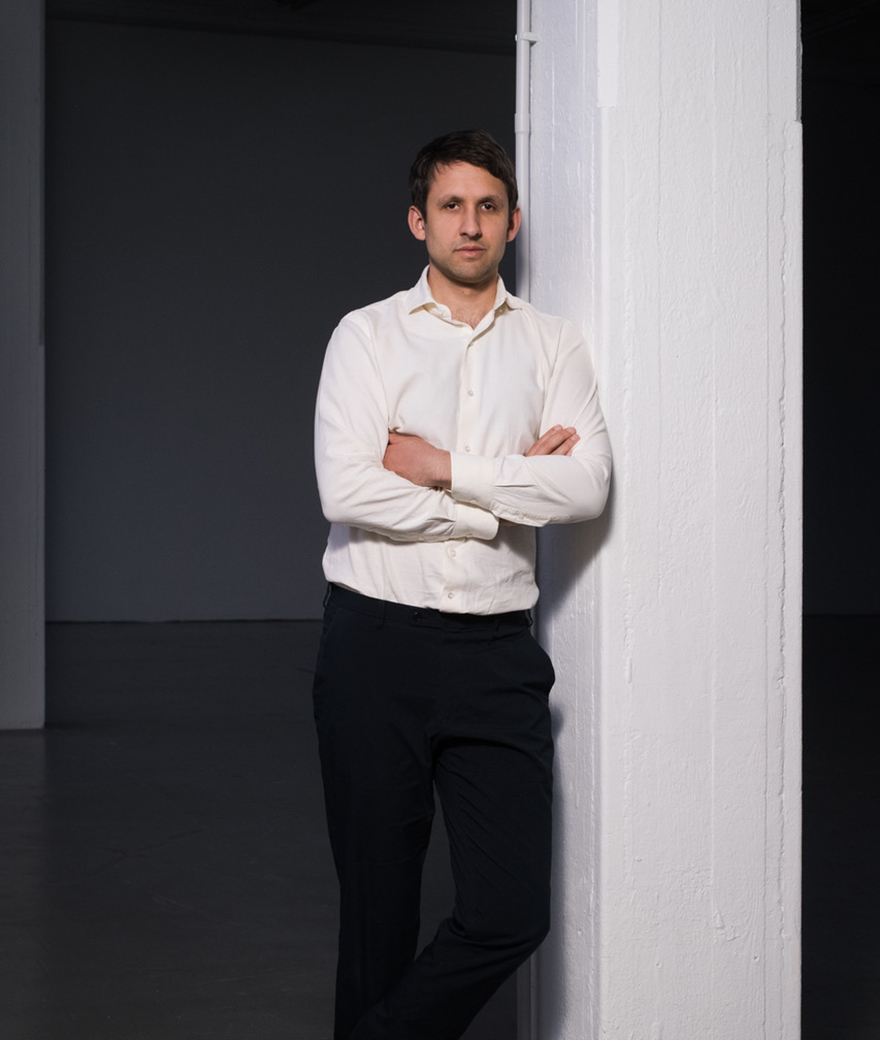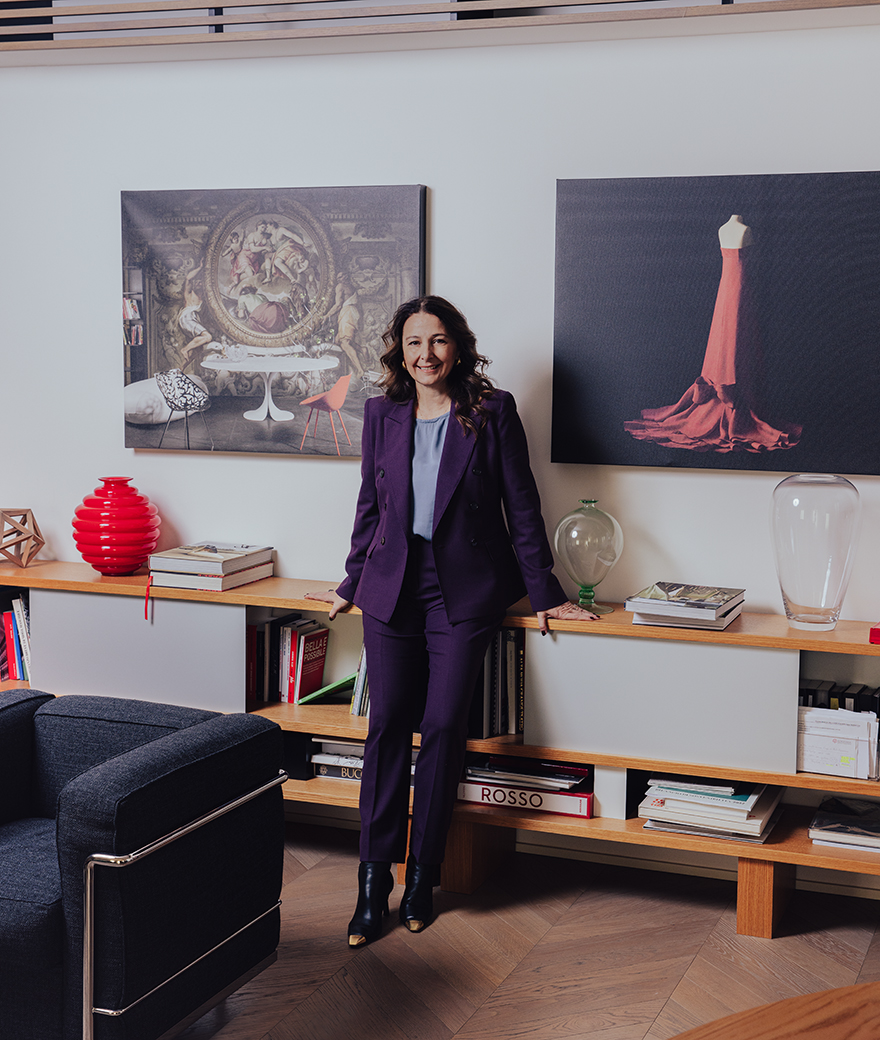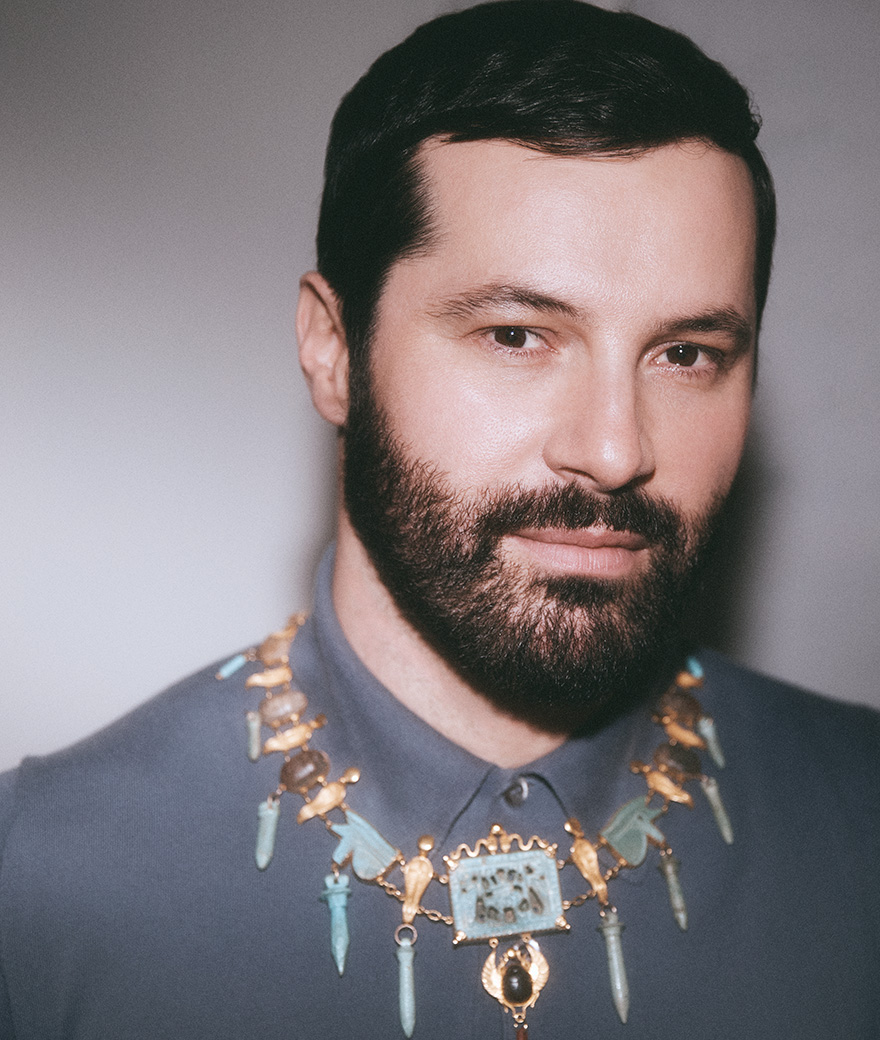The fifth edition of This Is Not a Prize has been awarded to artist Silke Otto-Knapp. Knapp's work represents a unique pictorial language and a coherent research of great historical and artistic importance. Her paintings, rigorously black and white, represent harmonious pictorial choreographies where figures are interpreters of a sophisticated dialogue with the space of the canvas.
A talk with Silke Otto-Knapp
The fifth edition of This Is Not a Prize has been awarded to artist Silke Otto-Knapp. Knapp's work represents a unique pictorial language and a coherent research of great historical and artistic importance. Her paintings, rigorously black and white, represent harmonious pictorial choreographies where figures are interpreters of a sophisticated dialogue with the space of the canvas.
In conversation with Mutina for Art's curator Sarah Cosulich, Silke Otto-Knapp spoke about her fascination for dance and how it influenced her work. She also discussed the evolution of her approach, her technique and her way of dealing with the exhibition space.
Let's begin from your incredible fascination with dance. How did it start and how did it influence your work?
I’ve been interested in dance for a long time. I used to live in London, where you can see both historical and contemporary works. It took me a little while, but I figured that I was really interested in contemporary dance and in those moments of its history where something transformative was happening. The Ballet Russe is very interesting for me, as well as the sixties and the Postmodern Dance with Yvonne Rainer, Trisha Brown and the Judson Dance Project.
I somehow got to know Michael Clark in London, through mutual friends, and I followed his work very closely. That’s been very influential on my thoughts about contemporary dance, because his style recalls classical ballet techniques, but they’re translated into a modern thinking about staging, moving and about the experience. Those features somehow found their way into my visual vocabulary.
In my most recent paintings, I work with light and dark contrast in the watercolour, so that you have only a silhouette describing a particular movement. That simplification makes it less about the dance I’m referring to, enhancing the physical experience of the viewers and the way they encounter the painting in a space, which brought me to think more about architecture and display.
How did you realise that watercolour could somehow "dance" on the canvas?
It has been a long process. When I went to art school, I had an ambiguous relationship with painting: I wasn’t really interested in the history, but I was very intrigued by what paintings would do and in how images work on us.
I started to experiment with watercolour on paper, but it was too illustrational for me, so I decided to use it on canvas. At first I’ve worked with neon lights, leaving them against the white of the canvas and creating almost an after image. Then I begun experimenting with layers and repetitions, reapplying and removing the paint, working with washes… and the most recent paintings, that are focused on the contrast between light and dark areas, are taking this the farthest. As well as taking it the farthest away from what you think watercolour should look like, because they don’t have any drawing or brush marks.
In your paintings, you use only shades of black and white, and no other colours...
When I got really interested in landscape, as a genre and as a motif, all the other colours somehow left my studio. I work with techniques of adding and removing, which means that figure and ground are always in an active relationship: while I’m removing something the pigment is accumulating in other areas, so some parts get lighter and other parts get darker at the same time. It’s the same as a dance, actually.
I also wanted to investigate why I was interested in landscape, so I thought about it in almost abstract terms, by reducing all the details and just working with the principles of adding and removing. My landscapes usually consists of a body of water, a sky and maybe a rock. Fogo Island, in Canada, has been very influential for my works. They don’t depict a place, but there’s something instilled about it.
How important is the creation of the exhibition space in your research?
It’s really important. I always think about the exhibition context and I usually consider it as a scene that I can set. There’s something temporarily about it: exhibitions only last for a certain amount of time in a specific place, so I always think about the architecture, the context, the city where it takes place, the weather, what kind of light comes into the space… all those things come together.
More recently, when the space allows, I’ve been working with free standing walls. I put together paintings as screens, so that they can stand by themselves, and try to create an active situation for the viewer. I’ve been also working with paintings that are made up out of multiple panels, which means I can reach more into the architectural space and think about my works in relationship to it.
Do you listen to music when you paint?
I used to listen to a lot of music, but I don’t do it so much anymore. I’m really into audio books, I listen to a lot of fiction. I often associate a particular group of paintings with the book I was listening to while working on them. They’re not connected, but it’s like as if they kept its aura.
You were born and grew up in Germany, then you moved and studied in London, you lived in England for a long time and now you are in Los Angeles. How did all these different places influence your painting? And how do live Los Angeles?
There is an intersection between the way I lived my life and the decisions that I’ve made in terms of changing my living situation, but I don’t know if it’s directly connected to my work. Maybe this is something that takes more time to be figured out.
Since I moved to LA I think about space in a different way because I have a bigger studio, but it has to do with exhibition spaces and opportunities as well. Also, as I’m mostly confined into my house, I work more through research materials and things that come into my private space rather than being out.

